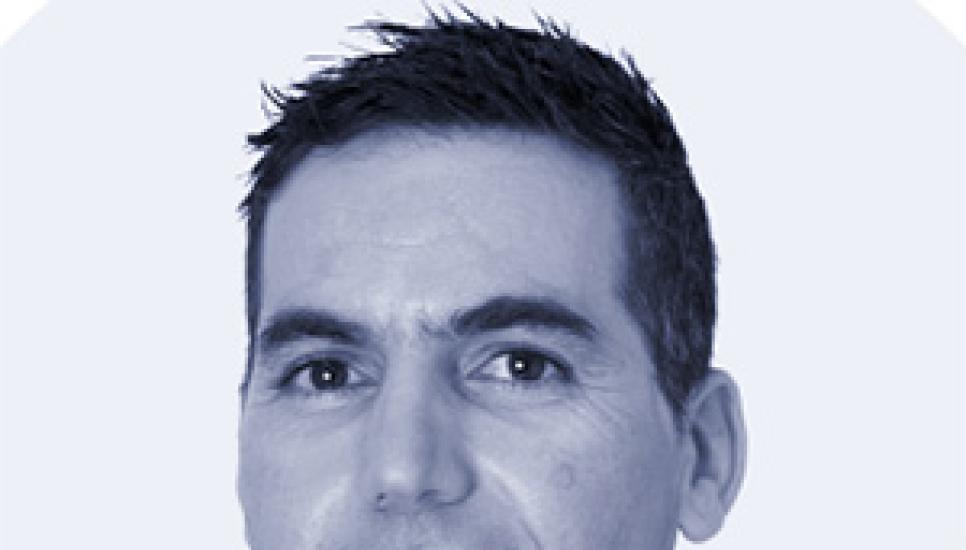The disruptive medtech company aiming to minimise patients' need for invasive mechanical ventilation intervention

INSPIRA is an innovative medical device company which is developing the ART system, a cost-effective early extracorporeal respiratory support system which will function as an artificial lung for deteriorating respiratory patients.
The ART system utilises a new approach based on hemo-protective technology aimed at rebalancing oxygen saturation levels while patients are awake and breathing, potentially minimising the patient's need for invasive mechanical ventilation intervention.
Ahead of presenting at the 32nd edition of the MedTech investing (MTi) forum on June 6 and 7, president and co-founder Joe Hayon explains the benefits and potential future applications of the system.
What has INSPIRA developed?
INSPIRA has developed a system called Augmented Respiratory Technology (ART), it’s a system that allows us to augment the lung’s respiratory support. When someone has acute respiratory failure, there's a tendency to put them on a face mask with an oxygen supplement. If that doesn't work, the doctors often have no choice but to intubate the patient, and place them on invasive mechanical ventilation.
We are moving towards treating a patient at an earlier stage while they’re still awake and while the native lung is still functioning. At this point, we're providing a new standard of treatment, whereby we will insert a cannula into the patient's jugular vein and extract a small volume of blood of up to one and a half litres per minute. This goes through the ART system which is a type of artificial external lung that removes carbon dioxide and dissolves high volumes of oxygen into the blood. Inspira’s solution is designed to take greater care of the red blood cells, reducing hemolysis and thrombosis in the process.
Circulating this enriched blood back through the same cannula, it provides an oxygen saturation boost to the patient. In a sense, we're reducing the load on the sick lungs so that together with the supersaturated blood, can provide the organs in the body with what they require.
The whole idea is to do this while the patient is awake and the lungs have not been shut down. This would prevent patients from deteriorating further and need for invasive mechanical ventilation intervention. We're talking about a market that's targeting millions of people every year and the goal is to prevent all the terrible risks and complications that are associated with invasive mechanical ventilation.

How did you pinpoint the need for the ART system?
From day one, we’ve always said there’s too much of a treatment gap. If you come to the hospital with an acute respiratory condition, you get an oxygen supplement. When that fails, you get invasive mechanical ventilation intervention, which is effectively life support.
We know that doctors are under tremendous pressure, and they must make very difficult decisions, but if you keep the patient on non-invasive mechanical ventilation or a supplement for too long, they may deteriorate. By the time you take them over to the invasive solution, you've lost valuable time and the success rate becomes lower. It's choosing the lesser of two evils, so we realised there was an unmet need and we looked to design a system to make the treatment more effective.
How is the solution an improvement upon current methods?
Our product is designed to be deployed at the first stage in Intensive Care Units (ICUs), but eventually to be migrated outside of ICUs to General Medical Wards. This is taking a solution and making it scalable and more affordable - not just in metropolitan areas, where approximately 95% of ICUs are located, but in other parts of the country where many people don't have the access to high-quality intensive care or emergency treatment.
There are millions of people who don't have this access. So, what we did is we focused on three different elements – what would benefit the patient, what would benefit the medical team and what would benefit the hospital.
By keeping the patient awake and communicative, you don't have to go through the stress of keeping patients intubated – more than 30% of patients suffer post-traumatic stress from being intubated and placed on invasive mechanical ventilators. Also, by not going through the sick lungs, you prevent damage to the sick organ which further add risks to the patient.
There is approximately a 50% mortality rate for patients who are on invasive mechanical ventilators. Sure, it's also because of the underlying medical problem, but it also shows that it may not be the most effective treatment solution.
Our system has a plug-and-play cartridge, which works pretty much like a printer. You just put it in, it self-calibrates and is very much built so that you don't need high-end clinical training that you would normally require with technology of this kind. We're reducing staff burden and aiming to improve the standard of care.

How has the solution been received so far?
We are still in the development stage, with the system yet to be tested in humans and has not yet been submitted for regulatory approval, but we work hand in hand with the medical world. The medical industry is very interested in what we’re doing. We had the head of the Israel ECMO [Extracorporeal membrane oxygenation] Society join our Scientific board after he was exposed to the product and was highly impressed with what we can do. Just two months ago, we also had the president elect of the Extracorporeal Life Support Organisation (ELSO) join the board. By working with a scientific advisory group, we're getting feedback about how we can make our product the best fit possible for the medical teams. So, it's not only about bringing the technology to the market, but it's also about making it a good fit.
Are there any other potential uses for the solution?
We speak with a lot of doctors. They tell us they not only want to use this to prevent the need for mechanical ventilation, but would like to also use it alongside mechanical ventilation. Under this application, we're talking about treating the patient while they're on the ventilator machine to reduce the pressure that's being pumped into the lungs, potentially preventing ventilator-induced lung injury, which is a very common problem. By oxygenating the blood and potentially reducing the pressure, it may shorten the time on the ventilator machine and maybe even trigger an early weaning process. That's the way we see it. We're not asking for a doctor to just use our solution, I think this is a very good onboarding process until they get their confidence - and then they'll realise what’s the best solution.
Joe Hayon will present INSPIRA to attract investment as Campden Wealth returns to Lausanne, Switzerland, for the 32nd edition of the MedTech investing (MTi) forum on June 6 and 7.
Since 2003, (MTi) has brought Campden Wealth’s community together with general partners from venture capital, innovation and investment managers from biotech, pharma, and medical devices multinationals, as well as start-ups and SMEs looking for smart capital.
For further information, contact Mounira Ruma via mouniraruma@campdenwealth.com.
Campden Wealth is not an investment advisory service and is not a registered investment adviser or broker/dealer and has performed no due diligence and does not endorse any investment services, strategies or managers listed in Managerlink or at any other Campden Wealth event. You should perform your own extensive due diligence.






